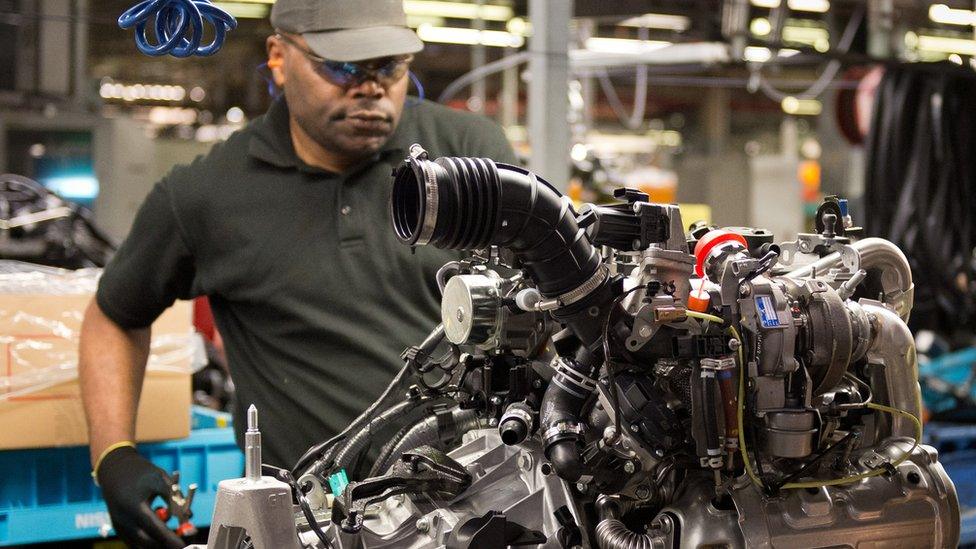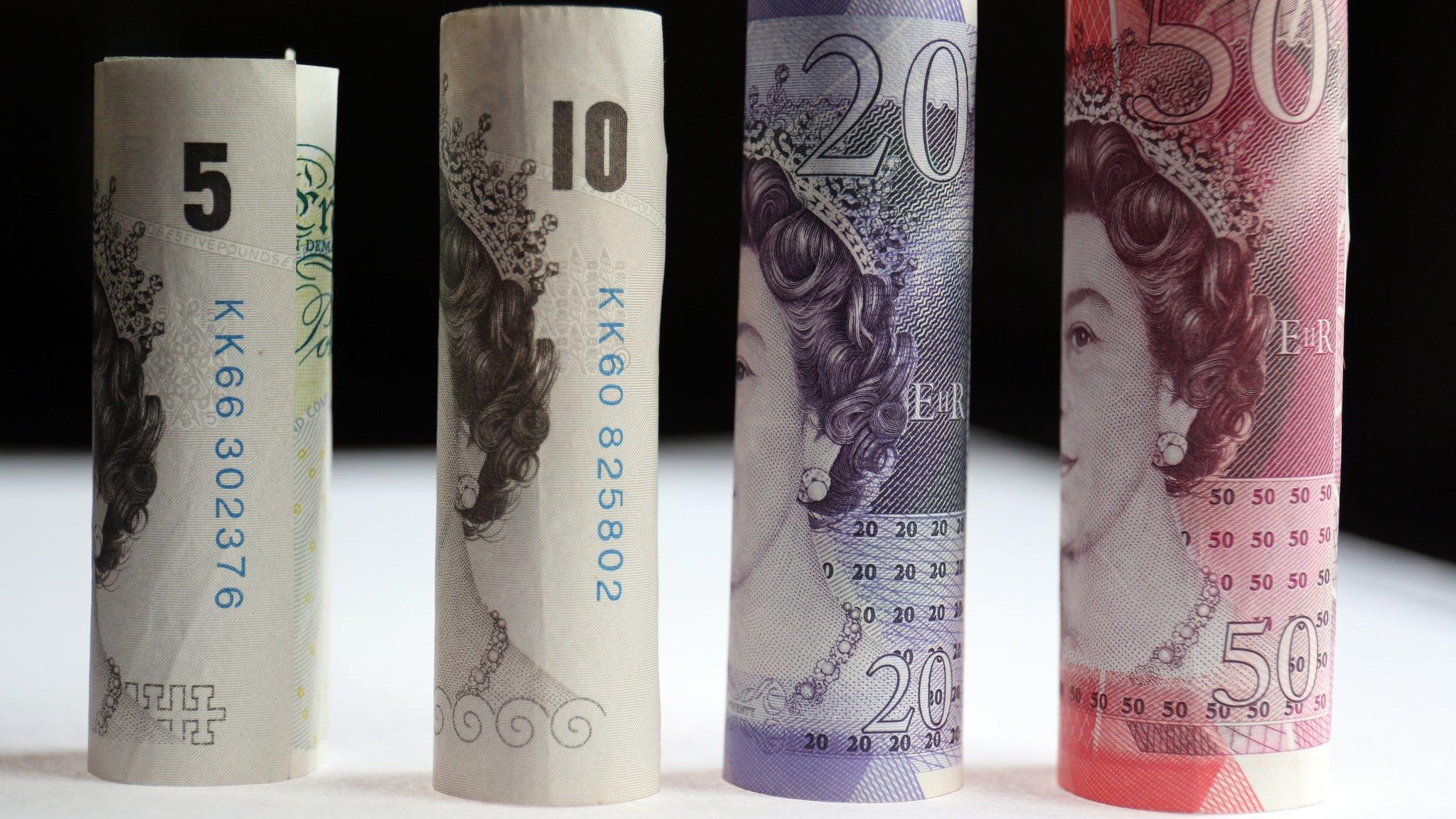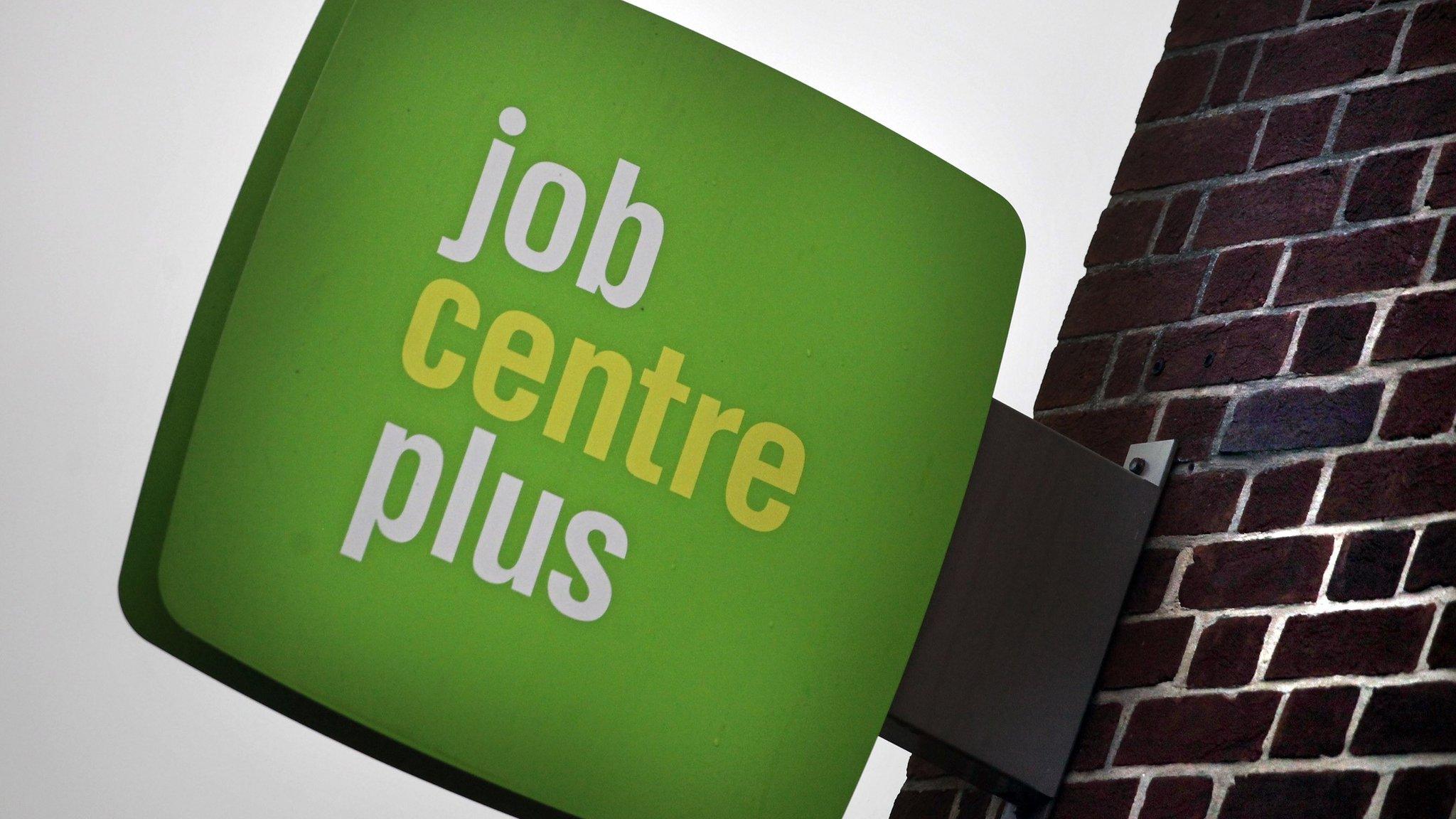UK unemployment rate falls to lowest since April 2008
- Published

The UK unemployment rate fell to a seven-year low of 5.3% in the three months to September, new figures show.
It was the lowest jobless rate since the second quarter of 2008, the Office for National Statistics (ONS) said., external
The number of people out of work fell by 103,000 between July and September to 1.75 million.
There were 31.21 million people in work, 177,000 more than for the April-to-June quarter and 419,000 more than in the same period a year earlier.
In the same labour market statistics report, the ONS revealed that the number of EU nationals working in the UK had increased by 324,000 in the past 12 months.
'Strengthening trend'
ONS statistician Nick Palmer said: "These figures continue the recent strengthening trend in the labour market, with a new record high in the employment rate and the unemployment rate still at its lowest level since spring 2008."
The ONS also said the total earnings of workers, including bonuses, in the three months to September were up 3% from a year earlier, the same rate as in the three months to August.
In September, total wages rose by 2.0%, down from 3.2% the previous month and the weakest increase since February.
Excluding bonuses, average weekly earnings growth slowed to 2.5% in the third quarter and 1.9% in September, both the weakest since the first quarter of 2015.
Chris Williamson, chief economist at research firm Markit, said: "The UK labour market continued to tighten in September, as unemployment fell more than expected and employment rose sharply. Pay growth remained surprisingly weak, however, despite further evidence of growing skill shortages, which normally leads to higher salaries.
"Pay growth remains central to policymaking, and interest rates are likely to stay on hold for as the official data show pay growth remaining subdued. Today's data therefore support the Bank's current projections that there will be no need to raise interest rates until 2017 due to persistent low inflation."
'Softer pace'
It comes after the latest Bank of England inflation report, released last week, indicated it was unlikely to raise rates soon.
The Bank voted 8-1 to keep rates on hold, and said inflation was only expected to pick up slowly, staying below 1% until the second half of 2016.
Following the latest jobs figures, Martin Beck, senior economic advisor to the EY ITEM Club said: "Looking ahead, with less room for joblessness to fall, a slower rate of decline in unemployment seems likely.
"Moreover, a recovery in productivity also points to a softer pace of job creation as firms extract more output from existing workforces. That said, the same trend will give firms the resources to pay more."
Economically inactive
Meanwhile, the ONS said that the claimant count increased for the third month in a row, up by 3,300 in October to 795,500. That figure counts people on Jobseeker's Allowance and those on the out-of-work element of Universal Credit.
The number of people classed as economically inactive fell by 22,000, to just under nine million in the latest period, the lowest for more than a year.
These include students, those on long-term sick leave, people looking after a relative and those who are no longer looking for work.
- Published6 November 2015

- Published5 November 2015

- Published14 October 2015
